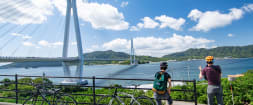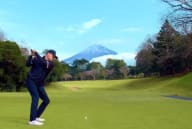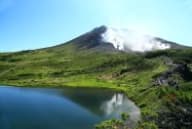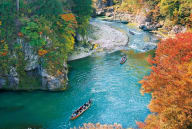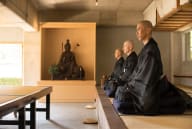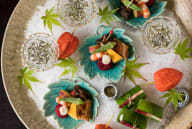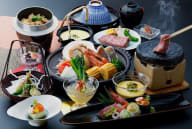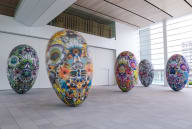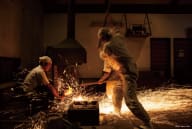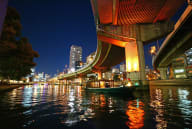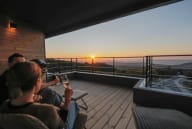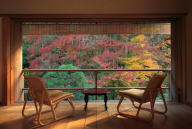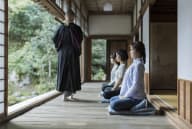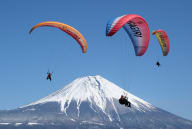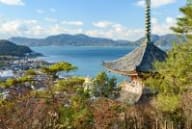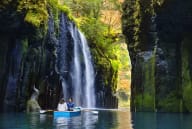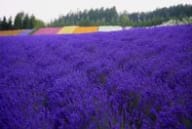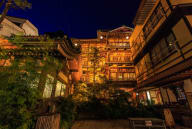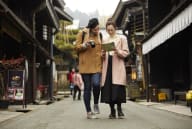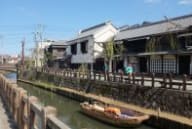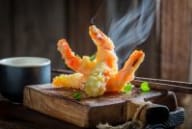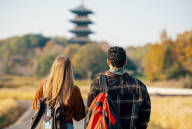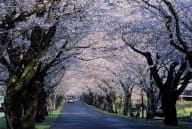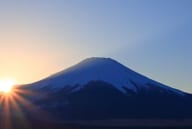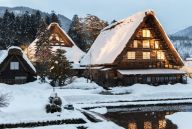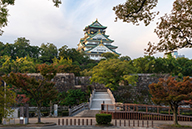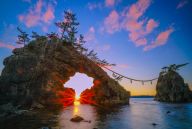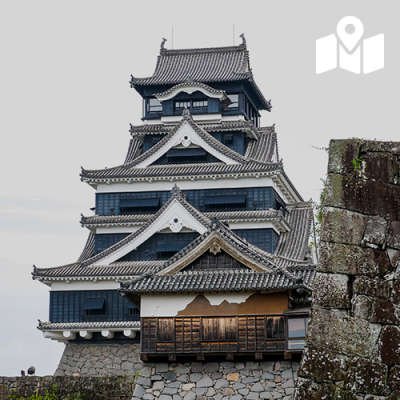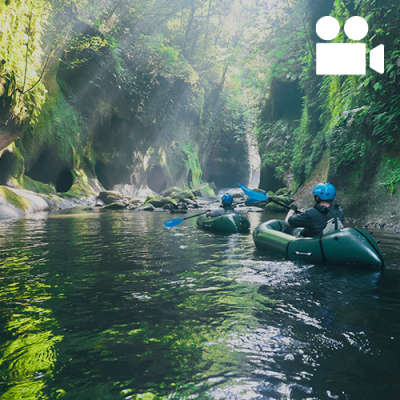Use the
Planning a Trip to Japan?
Share your travel photos with us by hashtagging your images with #visitjapanjp
The Kanto region, home to one-third of Japan's population, is the country's center for politics, economics, and modern urban life. Tokyo, the heart of Kanto, is a global hub for diverse culinary experiences where traditional and contemporary flavors thrive. Just a short train ride away brings you to the Hokuriku Shinetsu region, where you can enjoy both sea and mountains, along with historical landmarks, and artful structures. Both regions showcase the harmonious blend of Japan's vibrant cityscapes and serene, culture-rich countryside.
In This Article
- Shinjuku Kabuki Hall: A Festival of Japan's Iconic Delights
- Tobira Onsen Myojinkan: A Timeless Retreat in Nature
- ESHIKOTO: Sake and Culture in Harmony
- Toyama Prefectural Museum of Art and Design: Where Art Meets Empowerment
- Kurobe Gorge Railway Trolley Train: A Journey of Renewal
Shinjuku Kabuki Hall: A Festival of Japan's Iconic Delights
Tokyo

©TOKYU KABUKICHO TOWER
Rising above the lively Kabukicho district in Shinjuku, Kabukicho Tower is a high-rise complex that combines hotel and entertainment facilities, opened in 2023. This epicenter of creativity and leisure empowers lives by offering an escape from the everyday grind. At its heart is Shinjuku Kabuki Hall, where visitors can enjoy the diverse flavors of Japanese cuisine in a single location.

Instead, it's a modern twist on Japan's festivals and iconic foods designed to offer immersive cultural experiences that transform, empower, and connect local and international visitors. "We wanted to create a space that embodies the energy of Japan's local festivals," shares the hall's Tokyo local manager. "By integrating these elements into the interior, we hope visitors feel the festive spirit even in the heart of Tokyo."
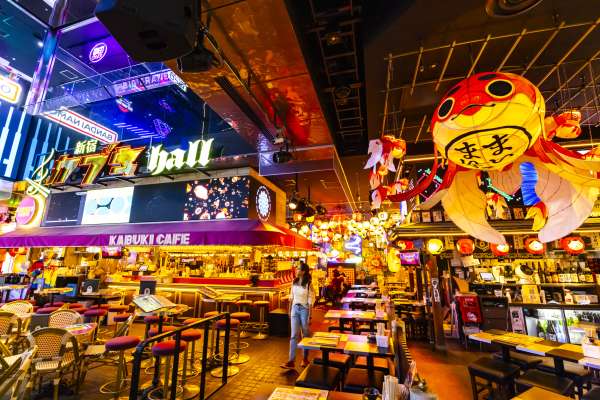
The hall offers a culinary journey across Japan, with food stalls divided by region, from Hokkaido's fresh sashimi to Okinawa's savory soba. "It's like exploring Japan's local flavors all in one place," explains the manager. Iconic elements, like Tohoku's Nebuta floats and Osaka's Dotonbori sign, showcase authentic works by local artisans and each region's traditional decoration methods, immersing visitors in Japan's festival spirit and regional culture. This thoughtful design encourages a sense of discovery, making each visit a unique adventure.

Left: Nebuta Float from Aomori Prefecture
Right: Replica of Dotonbori sign from Osaka Prefecture
The wait staff also prioritizes an inviting atmosphere, especially for foreign guests. "Even if they don't speak English fluently, our staff make an effort to communicate through gestures and photo menus," the manager noted. "We want everyone to feel welcome, just like at a traditional Japanese festival." The staff's approach goes beyond service; it aims to create a shared experience that makes everyone feel at home. The staff's warmth is palpable, drawing smiles from visitors.

Beyond food, the hall hosts nightly shows, ranging from J-Pop and DJs to traditional performances like Awa Odori. Seasonal events feature local groups performing classic festival dances. "We aim to blend old and new Japan," the manager proudly shares.

When asked what they hope visitors take away from their experience, the manager responded simply: "Japan is fun." Its retro Showa-era design, combined with modern elements, cultivates a sense of nostalgia with a dash of contemporary excitement. In every way, it's a place where locals and tourists can find joy, community, and empowerment—one meal, one song, and one festival-inspired moment at a time.
Tobira Onsen Myojinkan: A Timeless Retreat in Nature
Nagano

Nestled in the serene highlands of Matsumoto, Nagano, Tobira Onsen Myojinkan offers an intimate escape that blends traditional Japanese hospitality with the transformative power of nature. Established in 1931, this hidden ryokan (inn) sits alone in its mountain oasis, where time seems to slow, allowing for a deep connection with the surrounding beauty and inner reflection. Inside, the cozy lobby invites guests to unwind by the warm glow of a fireplace, surrounded by plush seating and traditional shoji screens.

The name is inspired by the legend of Ama no Iwato, where the Sun Goddess Amaterasu hid in a cave, plunging the world into darkness. According to the tale, the cave's stone door—known as tobira in Japanese—fell in this area, giving the place its name. With over 90 years of history, the ryokan started as a healing retreat for locals seeking the therapeutic benefits of its waters. Over the years, it has evolved into a luxury ryokan, maintaining its focus on holistic wellness. Guests can enjoy a variety of baths, including a unique standing bath (tachiyu) with a semi-open-air design, a lying bath (neyu), and an open-air bath—all maintained at a comfortable 38-40°C for optimal relaxation and longer soaks. "The temperature is intentionally kept gentle," explains a staff member who relocated to the area, drawn by the ryokan's unique charm. "It's about savoring the moment—letting nature and the onsen rejuvenate both body and soul."


A serene soak at the tachiyu onsen amidst nature
The ryokan's philosophy embraces the concept of the "luxury of doing nothing," inviting guests to immerse themselves in nature's stillness. "We are surrounded by rivers, lush trees, and birdsong," the staff noted. However, for those who wish to explore, activities can be arranged to suit guests' preferences, from forest treks and meditation to hands-on farming experiences.
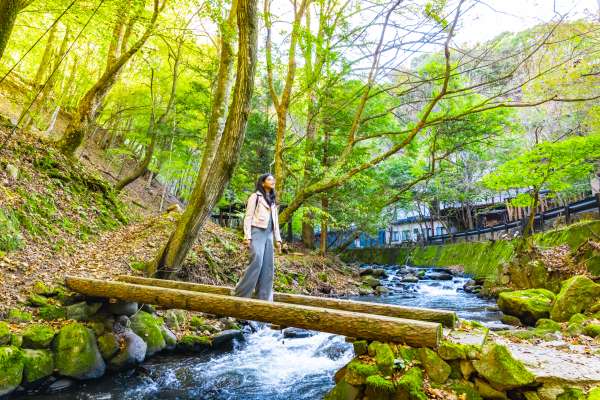
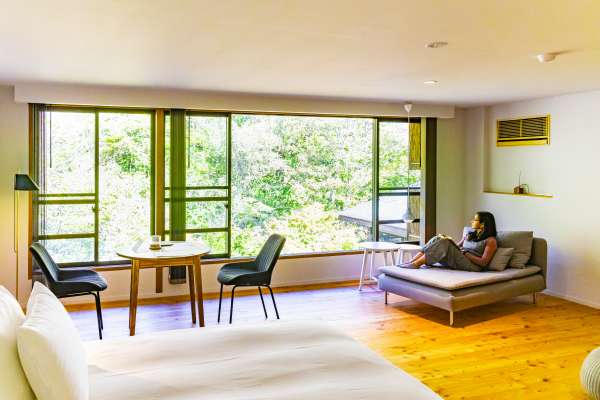
From cozy indoor relaxation with mountain views, unwind and reconnect—inside and out.
The sumptuous food served at the ryokan is as transformative as the stay itself. Guests can enjoy kaiseki-style Japanese cuisine or French-inspired dishes crafted from seasonal ingredients, including produce from the ryokan's farm.
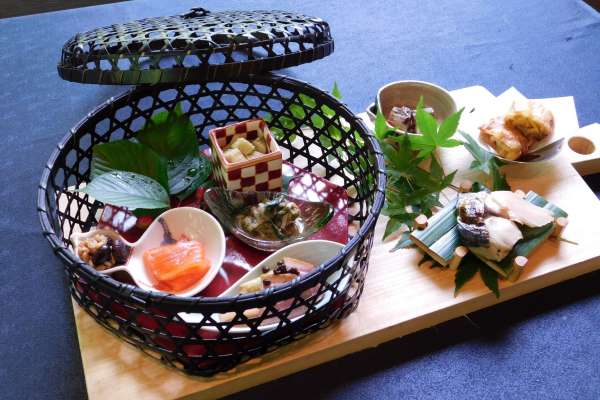
An artful appetizer heralding the start of a kaiseki dining experience
This culinary experience unfolds in a serene dining room that reflects the natural surroundings, featuring warm wooden elements, birch-inspired lighting, and panoramic windows, inviting nature's tranquility indoors.
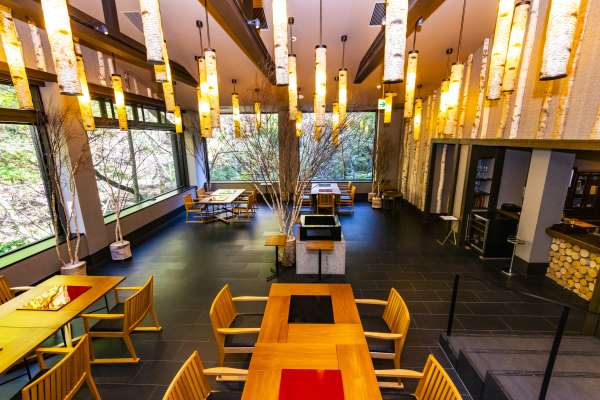
Shinshu Dining TOBIRA— where traditional Matsumoto culinary heritage meets modern technique and creativity
Beyond comfort and luxury, Tobira Onsen Myojinkan is dedicated to creating a deeply personal guest experience, earning recognition from the prestigious Relais & Châteaux. "We don't aim for mass tourism; our focus is on providing the highest quality service to each guest," the staff proudly explains. Whether exploring Matsumoto's stunning autumn foliage or unwinding in the soothing warmth of the onsen, guests often find themselves not just recharged but truly transformed.
ESHIKOTO: Sake and Culture in Harmony
Fukui

ESHIKOTO is an anadrome derived from tokoshie (とこしえ), which means "eternal" or "everlasting." Additionally, eshi is an old Japanese word for "good" or "beneficial," and koto means "thing" in Japanese. Together, ESHIKOTO conveys the idea of "good deeds" or "positive actions." This clever wordplay reflects the brewery's philosophy of blending tradition with innovation to share positivity and goodness through the art of sake-making.
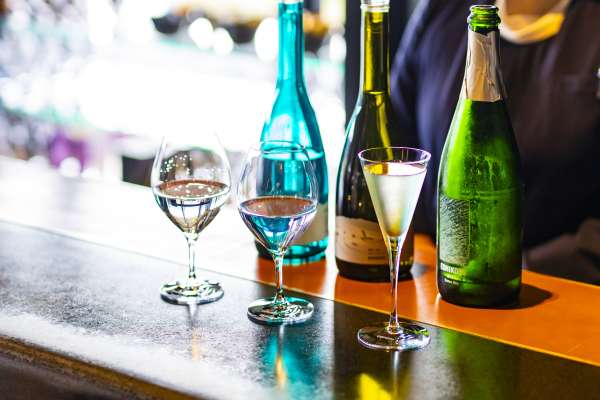
Founded by the renowned Kokuryu Sake Brewery in June 2022, ESHIKOTO was envisioned to combine sake tradition with Hokuriku's bountiful harvests and natural beauty, drawing inspiration from France's wine regions. "ESHIKOTO was designed to share the best of Fukui with Japanese and international visitors," our sommelier explained.
Set beside the Kuzuryu River, Kokuryu sake's water source, the facility's architecture is constructed from local cedar and harmonizes with its surrounding landscape. "The design allows natural light to filter through like sunbeams, creating a warm atmosphere," the sommelier adds.

Visitors can enjoy up to 20 varieties of sake, each reflecting the season—from the dry junmai daiginjo, a premium sake made with highly polished rice, to fruity sparkling options and even umeshu, the beloved Japanese plum liqueur.
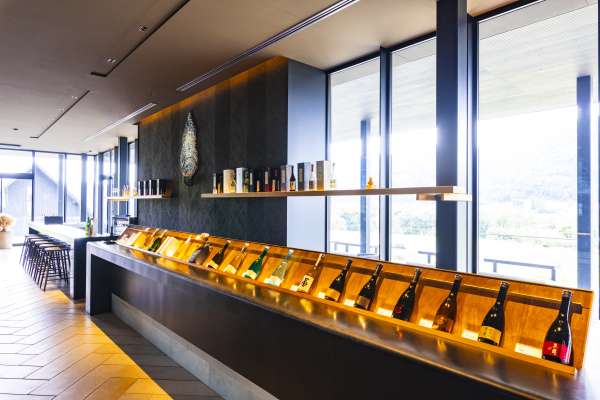
Tasting is also enhanced by locally crafted tableware, such as Echizen ceramics, which add depth to the experience. "The choice of glass or ceramic affects how you perceive the sake's aroma and warmth," explains the sommelier.

A Turkey-inspired ceramic cup in striking turquoise, available for purchase alongside other locally crafted masterpieces.
Adjacent to the sake-tasting space is the Apéro & Pâtisserie Acoya. This café-restaurant features dishes made with local Fukui ingredients. Led by a French-trained chef, the menu is designed to pair perfectly with ESHIKOTO's sake.
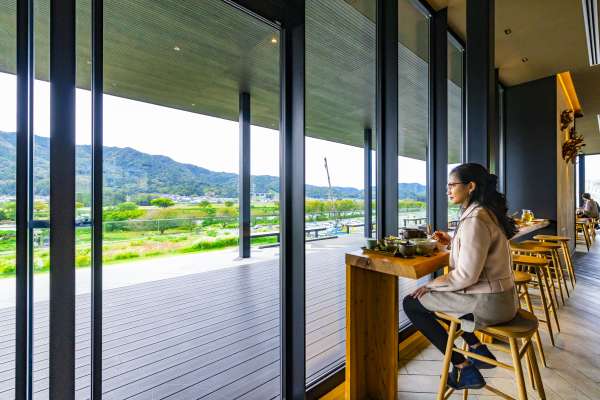
Their signature lunch—featuring Kokuryu Ginjo pork, raised on Kokuryu's sake lees—delivers a burst of juicy flavors, perfect for everyone, whether they drink sake or not. There's also a tempting selection of desserts, including ice cream made with sake lees. "Our goal is to create a balanced and harmonious experience," the chef notes.

Acoya's lunch set of the day
ESHIKOTO aims to empower guests by deepening their appreciation of Japanese culture through sake tasting paired with local cuisine. It seeks to enrich lives through education, interaction, and cultural exchange. At its core, ESHIKOTO aims to inspire a deeper connection with Japanese traditions, encouraging visitors to carry that inspiration back home. "We hope guests leave with a true sense of Fukui's beauty and richness," the sommelier shares. "We want them to tell their friends, 'Fukui is a wonderful place. Let's visit again.'"

Toyama Prefectural Museum of Art and Design: Where Art Meets Empowerment
Toyama

The Toyama Prefectural Museum of Art and Design(TAD) is a vital cultural hub in Toyama, Japan. It was preceded by the Museum of Modern Art, Toyama, founded in 1981, and reopened in 2017 after relocating and being newly rebuilt. "It was a significant shift," says the museum's publicist, who has been with TAD since 2019. "We aimed to connect art and design, reflecting Toyama's natural beauty." The museum combines its legacy of showcasing 20th-century art with a focus on contemporary design, creating a harmonious blend of tradition and innovation.

Atsuhiko MISAWA《Animal 2017-01》2017
One of the white bear sculptures at TAD – notice its eyes: the green eye on the right represents Toyama's mountains, while the blue eye on the left symbolizes its sea
One of the standout features of the museum is its emphasis on interactive engagement. Workshops in its Atelier provide hands-on experiences that enhance understanding of the exhibits. "We design the workshops to be not just educational but also fun," the publicist notes. "It's not just about viewing art; it's also an opportunity to learn by creating." Visitors leave with more than just memories—they leave with new experiences and ideas.

The free workshops at TAD's Atelier welcome all ages.
The museum's rooftop, featuring the whimsical "Onomatopoeia Rooftop," is another highlight that reflects empowerment through fun and creativity. "It's one of the most popular attractions," says the publicist. "We wanted to maintain this playful element from the former park to ensure creativity extends beyond the galleries."
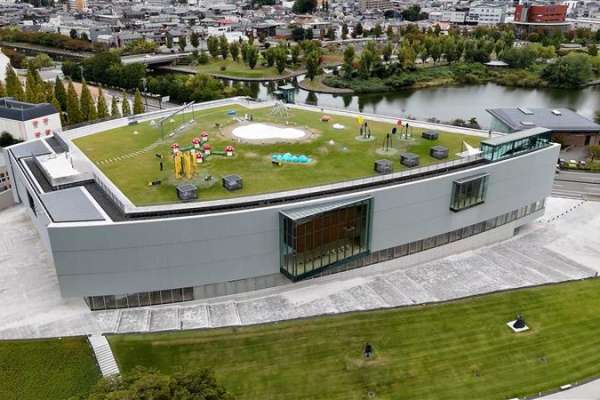
Aerial view of TAD’s rooftop showcasing the Onomatopoeia Rooftop playground and surrounding landscape.

TAD's Onomatopoeia Rooftop invites children and adults alike to interact with art in a carefree manner.
Aligning with the Osaka Expo 2025 theme of "Empowering Lives," the museum's curation emphasizes how art can transform perspectives, stimulate creativity, and encourage self-expression.

An interactive touchscreen displaying posters from around the world
It is not only a repository of art but also a dynamic cultural hub that welcomes international audiences, showcasing universally recognizable works from Picasso to Japanese modernists. The museum's rotating exhibitions and diverse collections mean that each visit is a new journey, reinforcing the idea that art, in its many forms, can be a catalyst for change and empowerment.
Kurobe Gorge Trolley Ride: A Journey of Renewal
Toyama

Initially built for the Kurobe River hydroelectric power plants in 1923, this historic trolley line has become a gateway to nature's untouched beauty. Opened to tourists in 1953, it invites passengers to reconnect with themselves and their surroundings.
The slow, open-air trolley ride spans approximately 20 kilometers one way, taking about one hour and 20 minutes through Kurobe Gorge. It's a sensory experience, engaging passengers with the soothing sounds of rushing rivers, crisp mountain air, and panoramic views of dense forests, waterfalls, and vibrant autumn foliage. "This place is known for its pure air, and passengers often talk about feeling refreshed as if they've momentarily escaped the demands of daily life," shares a staff member with over 20 years of experience with us.

Wind through one of Japan's deepest gorges on the vibrant Kurobe Gorge Train
As the train departs Unazuki Station, passengers are greeted by the sight of the iconic landmarks and symbols of Kurobe Gorge's thriving nature, including Shin-Yamabiko Bridge, a crimson steel bridge, the Unazuki Dam, and the Shin-Yanagawara Power Plant.

Shin-Yamabiko (Mountain Echo Tree Spirit) Bridge
Just beyond, a quirky highlight soon appears: a suspension bridge explicitly built for monkeys to cross the mountains safely. Spotting a monkey on the bridge is considered a lucky event, as catching these shy creatures in action is rare.
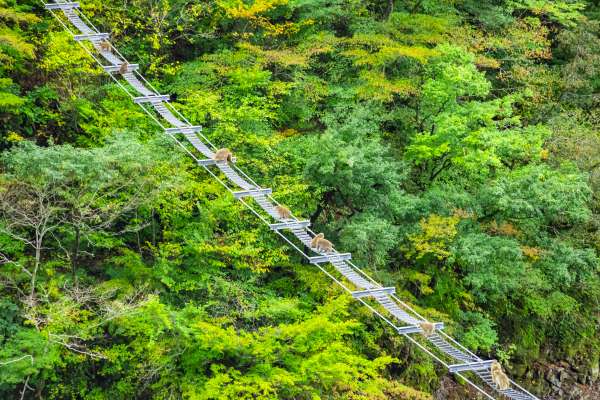
The suspension bridge for monkeys hanging 15 meters above Lake Unazuki.

The route continues through the Kuronagi area, famous for its hidden Kuronagi Onsen, accessible only by foot.
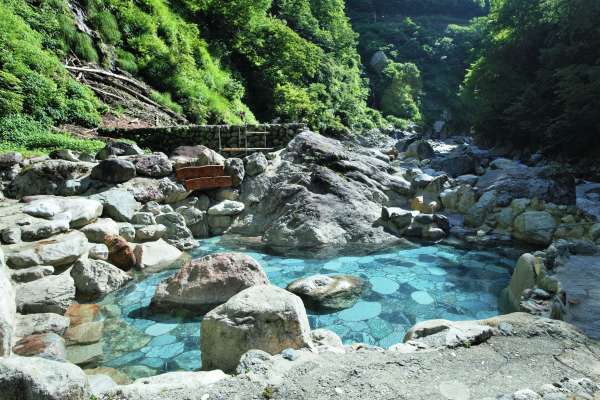
Kuronagi Onsen
Shortly after, the trolley crosses Atobiki Bridge, which spans the steepest and deepest part of the gorge at 60 meters. It's said that the sight of this dramatic drop once made even seasoned mountaineers inch back in awe.

Atobiki Bridge
Further ahead is Kanetsuri Station, known for its riverside hot springs. At the final stop, Keyakidaira Station, visitors can enjoy more scenic views, such as the breathtaking Okukane Bridge and the striking Hitokui Iwa.
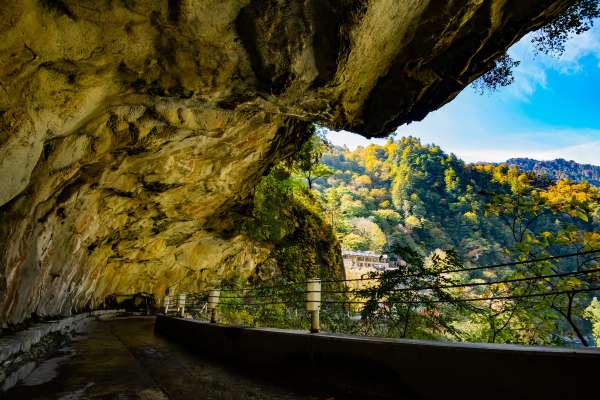
Hitokui Iwa, or the 'Man-Eating Rock,' impresses visitors with its open-mouthed formation, evoking the sensation of being 'swallowed' by the Kurobe Gorge.
The Kurobe Gorge Railway is more than a scenic ride—it's a journey that nurtures the spirit towards renewal and empowerment. As the veteran staff aptly puts it, "Whether it's the calming sounds of the river or the invigorating mountain air, the experience offers passengers a moment to pause, reflect, and return feeling stronger and more connected." For details on the 2025 schedule, please visit the Kurobe Gorge Railway website.

An Empowering Journey of Discovery
As our exploration of these diverse destinations comes to an end, it's clear that each offers a distinct, unforgettable experience rooted in Japanese culture, tradition, and natural beauty. From the vibrant festival atmosphere of Kabukicho Tower's Shinjuku Kabuki Hall to the serene, nature-embracing hot springs of Tobira Onsen Myojinkan, each location invites visitors to connect deeply with local heritage and hospitality. The cultural richness continues at ESHIKOTO, where Fukui's flavors and sake traditions create a sensory journey, and at the Toyama Prefectural Museum of Art, where art and design seamlessly merge. Finally, the breathtaking views from the Kurobe Gorge Railway reveal the untamed beauty of Hokuriku's wilderness. Together, these destinations capture the spirit of Japan's evolving identity—where modern vibrancy meets ancient wisdom, and every moment offers a chance to immerse, learn, and grow.














